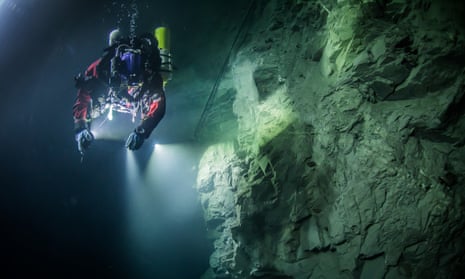A team of explorers say they have found the world’s deepest underwater cave, in the Czech Republic.
The Polish cave diver Krzysztof Starnawski, who led the expedition, said he felt like a “Columbus of the 21st century” to have made the discovery of the cave, which is at least 404 metres (1,325ft) deep, near the eastern town of Hranice.
On Tuesday, Starnawski dived to 200 metres down the flooded limestone Hranice abyss , then used a remotely operated underwater robot to reach a further 204 metres, the total length of its cord. However, he said, the robot did not seem to have hit the bottom of the abyss.
In 2015, Starnawski dived to 265 metres at Hranice, which required him to spend more than six hours in a decompression chamber.
Speaking on the phone from his home in Kraków, Starnawski said Hranice abyss, which divers have explored for decades, was 12 metres deeper than the previous record holder, a flooded sinkhole in Italy called Pozzo del Merro.
The Czech Speleological Society said it believed the cave was deeper than 404 metres. “It [the robot] was as deep as its rope could go, but the bottom was still nowhere in sight,” the society said in a statement.
Mud and a water temperature of 15C (59F) make diving in the cave difficult. The water’s mineral composition damaged both equipment and exposed skin, Starnawski said, “but that is the only price to be paid for this discovery and it was worth paying”.
On Saturday, he planned to dive to 200 metres again to bring the robot back through the narrow passage leading to the bottom of the abyss. The device was made for the expedition and operated by the Polish company GRALmarine.
Starnawski said National Geographic, which first reported the discovery, covered some of the cost of the operation.

Comments (…)
Sign in or create your Guardian account to join the discussion